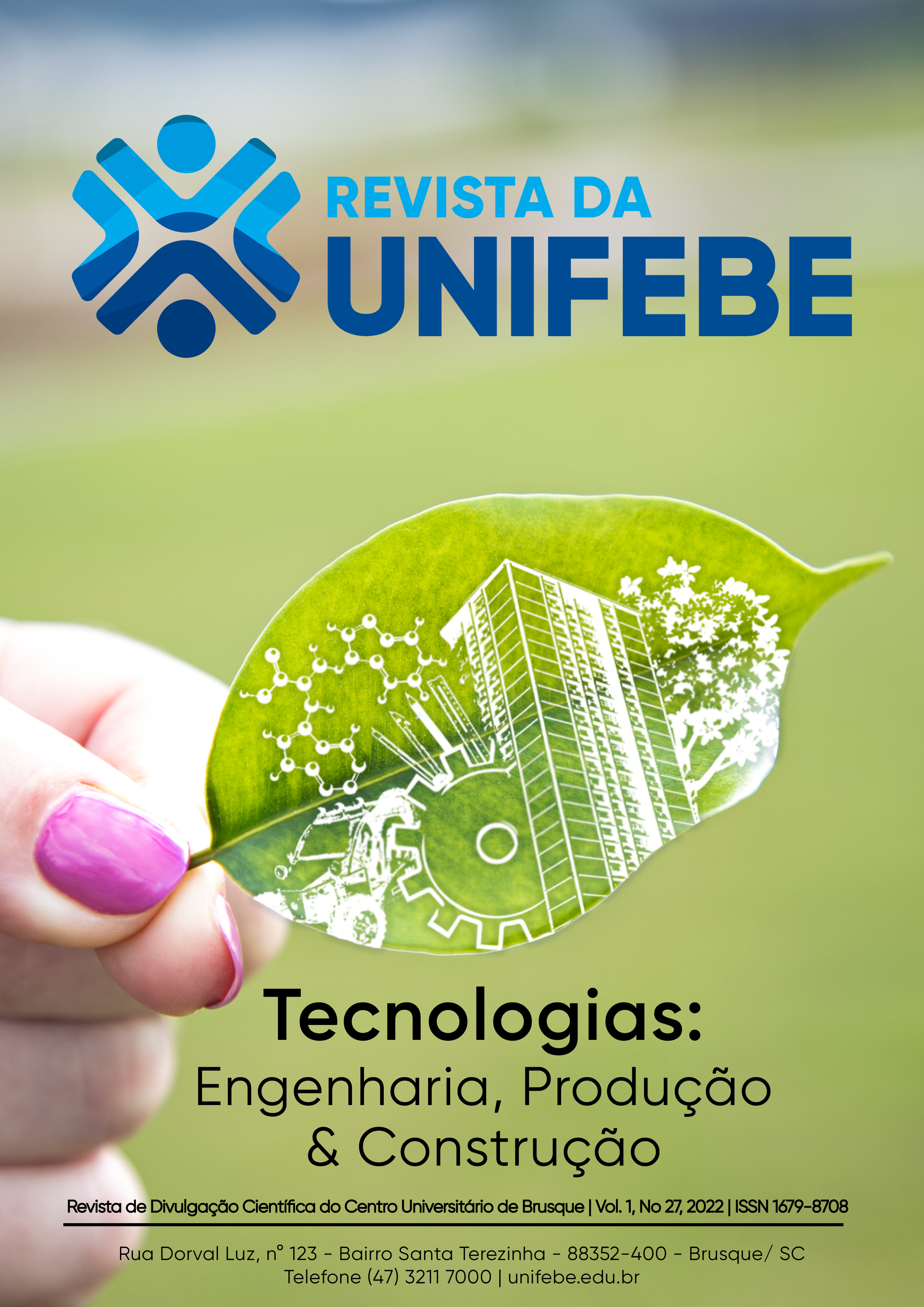REMOÇÃO DE UMIDADE DE LODO TÊXTIL POR SECAGEM TÉRMICA
Abstract
The textile industry treatment of effluents needs to go through biologic treatment of activated sludge in order to eliminate its high organic rates. This process generates dewatered sludge with high humidity, requiring the rightway and composition to dispose it, according to the law 12.305 from 2nd August, 2010, which instituted the Política Nacional de Resíduos Sólidos. The purpose of this article is to demonstrate the reduction of sludge humidity through the installation of a thermal dryer. In order to reproduce the tests, the sludge was collected from a textile industry effluents treatment station, located in the town of Guabiruba – SC. In order todetermine the equilibrium humidity ratio, the sludge was submitted to a dewatering process in a belt filter press, followed by a dryer process in a thermal dryer machine. In this situation, the humidity removal reaches 87%, generating a 66%reduction in thetotal volume of sludge sent to landfill. This process of textile sludge drying reflects gains both in costs for the company and in a smaller volume discarded
in nature.
Downloads
Published
Issue
Section
License
Pelo presente Termo de Autorização para Publicação de Artigo Científico em Obra Coletiva, tendo em vista o disposto na Lei Federal nº 9.610, de 19/12/1998, autorizamos a partir desta data, em caráter exclusivo e isento de qualquer ônus, o uso do texto, para publicação em obra coletiva a ser organizada pelo Centro Universitário de Brusque- UNIFEBE, mantido pela Fundação Educacional de Brusque – FEBE.
Declaro ainda, que o texto acima referenciado é de nossa autoria, nos responsabilizando, portanto, pela originalidade e pela revisão do texto, concedendo ao Centro Universitário de Brusque - UNIFEBE plenos direitos para escolha do editor, meios de publicação, meios de reprodução, meios de divulgação, tiragem, formato, enfim, tudo o que for necessário para que a publicação seja efetivada.
Reiteramos ainda, que esta autorização vigorará pelo prazo de 05 (cinco) anos a contar de sua assinatura, podendo o Centro Universitário de Brusque - UNIFEBE realizar neste período quantas edições julgar conveniente.





